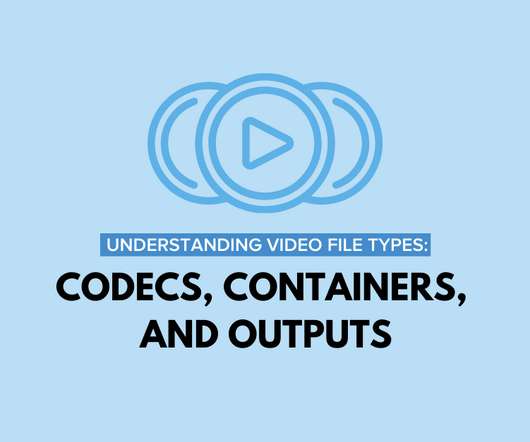Understanding Video File Types: Codecs, Containers, and Outputs
TechSmith Camtasia
JULY 19, 2021
MOV (QuickTime Movie) stores high-quality video, audio, and effects. FLV, F4V, and SWF are flash video formats designed for Flash Player, but they’re commonly used to stream video on YouTube. Flash is not supported by iOS devices. WEBM or HTML5 formats are best for embedded videos on your business or personal website.


















Let's personalize your content